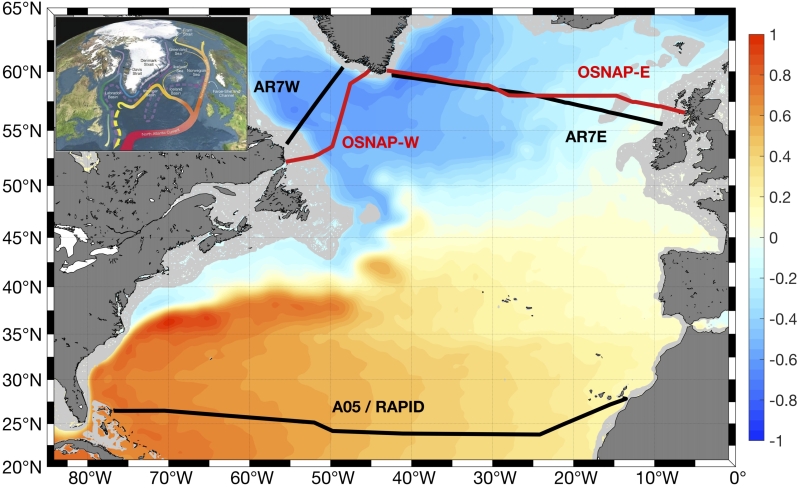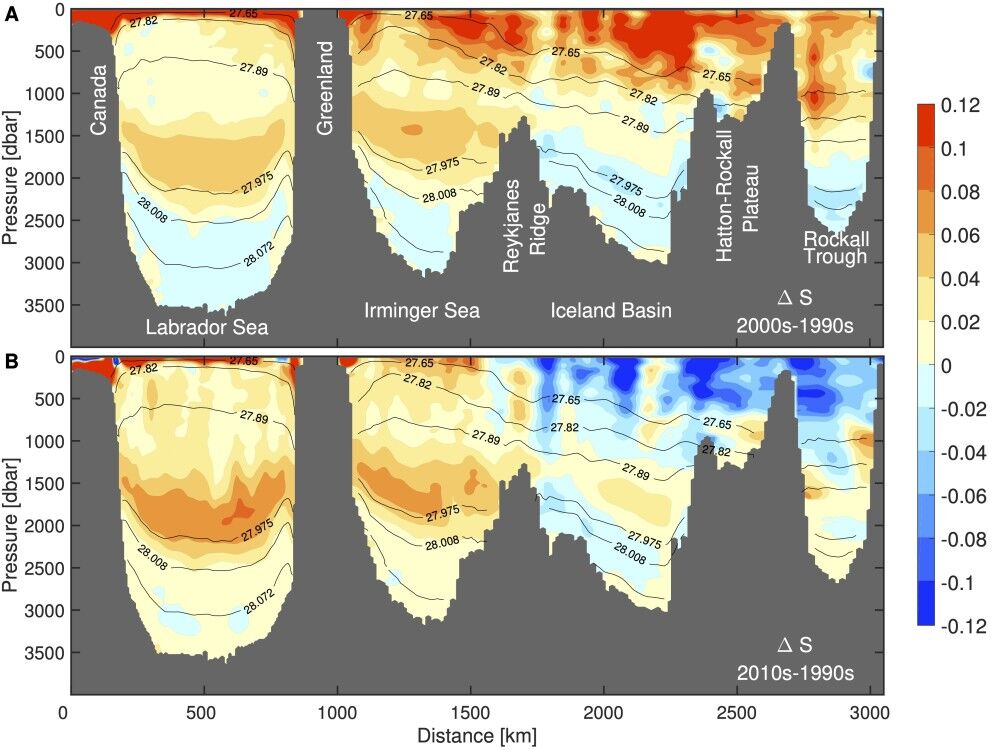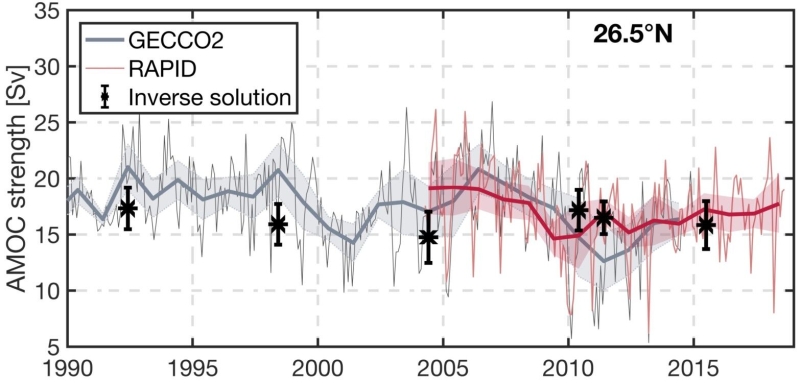
Ocean vertical structures are changing as a result of global warming. Whether these changes are in pace with the ocean circulation is unknown.
Now, an international team of scientists from the South China Sea Institute of Oceanology (SCSIO) of the Chinese Academy of Sciences, China, Georgia Institute of Technology, USA, and GEOMAR Helmholtz Centre for Ocean Research Kiel, Germany, gave an answer to the question.
According to their study published in Science Advances on Nov. 27, ocean circulation changes and ocean interior property changes may not occur at the same pace as it was previously suggested.
The researchers found that despite profound decadal ocean interior property changes, the overturning circulation remains stable on decadal timescales since the 1990s.
"The Atlantic Meridional Overturning Circulation (AMOC) primarily consists of a northward-flowing upper limb that is warm and saline and a southward-flowing lower limb that is relatively cold and fresh," said Dr. FU Yao from SCSIO, leading author of the study. The associated large net heat and freshwater transports are essential for regional and global climate.
"Under global warming, there have been rising concerns that the AMOC is slowing down or will do so in the future," said Dr. WANG Chunzai, corresponding author of the study. Hollywood science fiction movie The Day After Tomorrow even depicts catastrophic climate effects following a shutdown of the AMOC which leads to a new ice age.
Hydrographic changes at high latitudes have long been thought to be closely related to AMOC changes. Dr. WANG further explained "Despite global upper ocean warming and record-breaking freshening of the subpolar North Atlantic have been observed, it is still unclear whether or not the AMOC has changed markedly over the past decades considering an observational perspective."
In this study, a compilation of repeated hydrographic sections in the subtropical and subpolar North Atlantic, which span over nearly 30 years, is used together with satellite altimetry data, basin-wide array observations, and assimilation model data.
The researchers found that not only waters from the surface to the intermediate layer (i.e., from the surface to about 2000 m) have undergone marked variations in temperature, salinity, and dissolved oxygen over the decades, but also waters at greater depth below 2000 m have shown significant salinification, signs of warming and an increase in oxygen in the recent decades.
"However, in spite of these profound hydrographic and tracer concentration changes, the AMOC states in both the subpolar and subtropical North Atlantic between the 1990s and 2010s are indistinguishably different from each other," said Dr. FU. These results pose an interesting contrast and indicate that ocean interior property changes and AMOC changes may not occur at the same pace as it was previously suggested. Further researches are needed to advance our understanding on their connection.

Map of the North Atlantic Ocean. The hydrographic sections and array observations are marked with black and red lines. (Image by SCSIO)

Decadal salinity changes in the subpolar North Atlantic, (A) between the 2000s and 1990s, and (B) between the 2010s and 1990s. (Image by SCSIO)

AMOC strength timeseries at 26°N (Image by SCSIO)

86-10-68597521 (day)
86-10-68597289 (night)

52 Sanlihe Rd., Xicheng District,
Beijing, China (100864)

